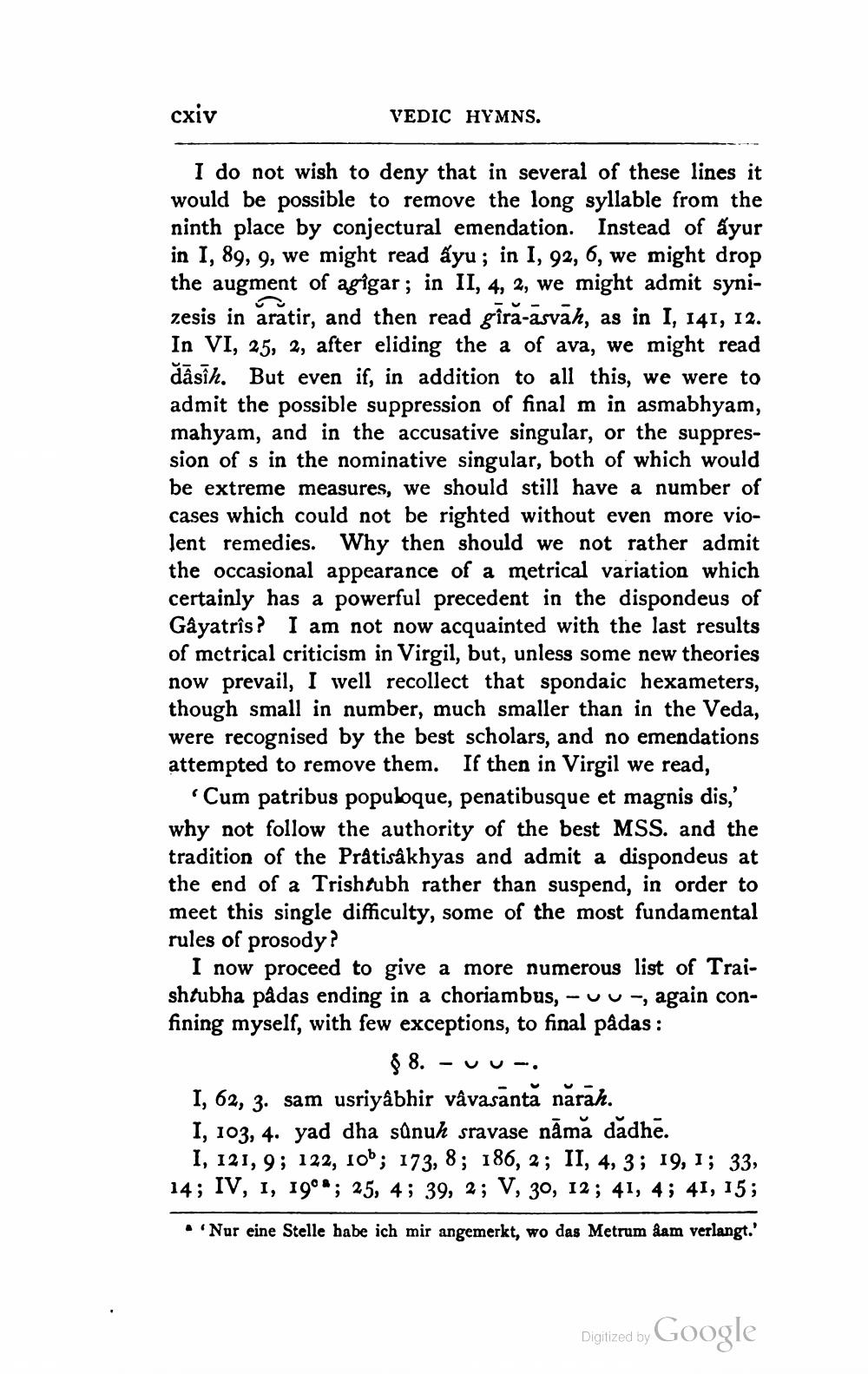________________
cxiv
VEDIC HYMNS.
I do not wish to deny that in several of these lines it would be possible to remove the long syllable from the ninth place by conjectural emendation. Instead of ayur in I, 89, 9, we might read ayu; in I, 92, 6, we might drop the augment of agigar; in II, 4, 2, we might admit synizesis in aratir, and then read gira-asvah, as in I, 141, 12. In VI, 25, 2, after eliding the a of ava, we might read dāsīh. But even if, in addition to all this, we were to admit the possible suppression of final m in asmabhyam, mahyam, and in the accusative singular, or the suppression of s in the nominative singular, both of which would be extreme measures, we should still have a number of cases which could not be righted without even more violent remedies. Why then should we not rather admit the occasional appearance of a metrical variation which certainly has a powerful precedent in the dispondeus of Gayatrîs? I am not now acquainted with the last results of mctrical criticism in Virgil, but, unless some new theories now prevail, I well recollect that spondaic hexameters, though small in number, much smaller than in the Veda, were recognised by the best scholars, and no emendations attempted to remove them. If then in Virgil we read,
Cum patribus populoque, penatibusque et magnis dis,' why not follow the authority of the best MSS. and the tradition of the Prátisakhyas and admit a dispondeus at the end of a Trishtubh rather than suspend, in order to meet this single difficulty, some of the most fundamental rules of prosody?
I now proceed to give a more numerous list of Traishtubha pâdas ending in a choriambus, -UU-, again confining myself, with few exceptions, to final padas:
$ 8. -uu1, 62, 3. sam usriyâbhir vâvasāntă narah. I, 103, 4. yad dha sūnuh sravase nāma dadhe.
1, 121, 9; 122, 106; 173, 8; 186, 2; II, 4, 3; 19, 1; 33, 14; IV, 1, 19° ; 25, 4; 39, 2; V, 30, 12; 41, 4; 41, 15;
• Nur eine Stelle habe ich mir angemerkt, wo das Metrum dam verlangt.'
Digized by Google




